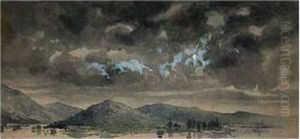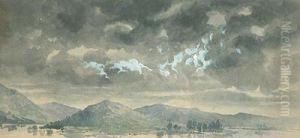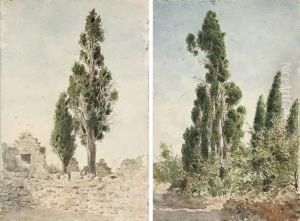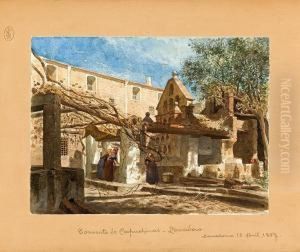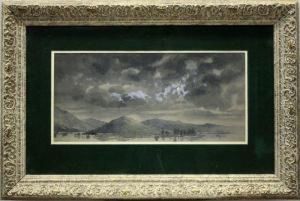Francisco Soler Rovirosa Paintings
Francisco Soler Rovirosa was a Spanish painter, set designer, and decorator born on February 23, 1836, in Badalona, Catalonia, Spain. He is particularly known for his contributions to the world of theater set design in the 19th century. Soler Rovirosa's artistic inclinations were evident from an early age, and he was trained in the fine arts in Barcelona, where he developed a strong foundation in drawing and painting.
In the pursuit of furthering his artistic education, Soler Rovirosa moved to Madrid. It was there that he began his career in earnest, focusing initially on painting. However, he soon discovered his passion for theater and became one of the most sought-after set designers of his time. His work was characterized by a meticulous attention to detail and a strong sense of realism, which brought the theatrical productions to life and significantly enhanced the audience’s experience.
Throughout his career, Francisco Soler Rovirosa worked with many prominent theaters in Spain, including the Teatro Real in Madrid. His innovative approach to set design involved the use of perspective and lighting to create depth and illusion, techniques that were revolutionary at the time and which have had a lasting impact on the field.
Apart from his set designs, Soler Rovirosa also painted landscapes, portraits, and historical scenes. His paintings were well received by the public and critics alike, and he participated in several exhibitions, gaining recognition for his artistic talent.
Soler Rovirosa's contributions to art were not limited to his own creative work. He was also involved in education, teaching the next generation of artists and set designers. His influence extended beyond his lifetime, as his students continued to apply and adapt his techniques in theater production.
Francisco Soler Rovirosa's dedication to his craft and his innovative spirit left an indelible mark on the world of scenic design. His work bridged the gap between traditional painting and the dynamic requirements of theatrical presentation, helping to elevate set design to a recognized art form. He passed away on September 13, 1900, in Madrid, leaving behind a legacy of artistic excellence and innovation that continues to inspire set designers and artists to this day.
